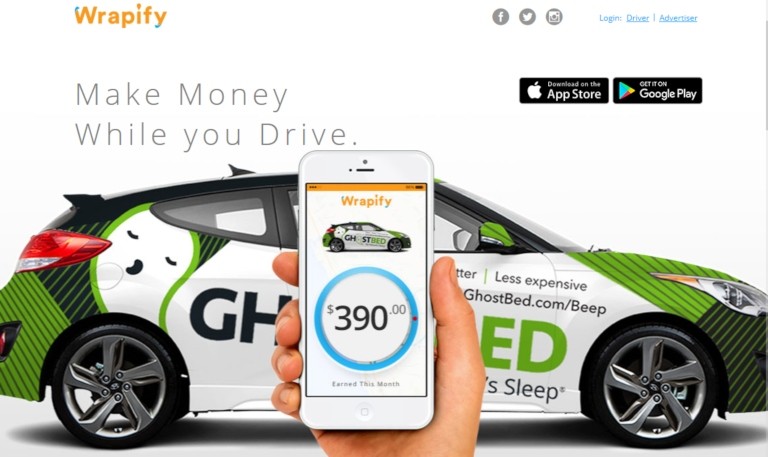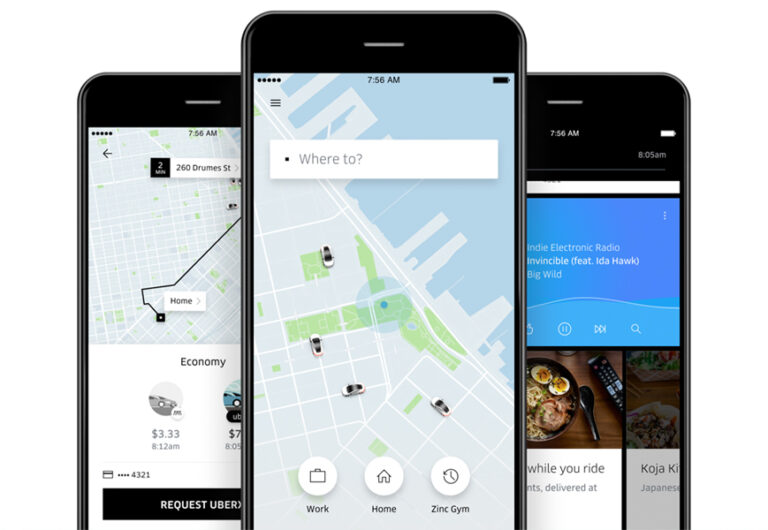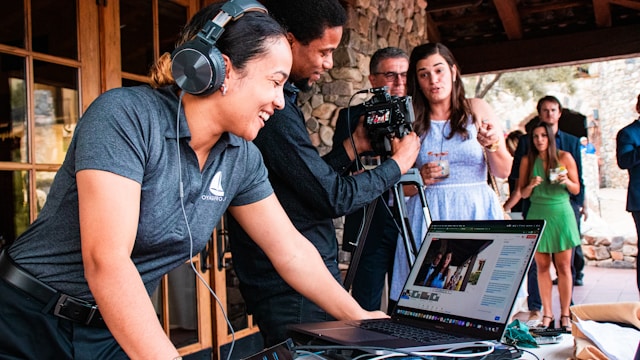Is That Old Car Just Collecting Dust (and Bills)?
Let’s be real. You’ve got that car – maybe it’s the reliable sedan that got replaced by an SUV, the fuel-efficient commuter you don’t need now you work from home, or just the older model sitting in the driveway more often than not. It costs money just sitting there: insurance, maybe registration, perhaps the occasional battery jump.
What if, instead of being a slow drain on your wallet, that car could actually make you money? Especially with costs rising everywhere (thanks, 2025!), finding extra income streams is smarter than ever. Forget thinking it’s destined for the junkyard just yet. Your underused or older vehicle could be a surprising source of semi-passive or active income.
Here are 5 (updated for 2025!) ways to turn that idle car into a cash-generating asset:
1. Rent It Out: Peer-to-Peer Car Sharing (The OG “Passive” Car Income)
- The Idea: Platforms connect car owners (like you!) with people who need to rent a car for a few hours, days, or weeks. Think Airbnb, but for cars.
- Why It Works for Older Cars: While flashy new cars command higher prices, there’s a solid market for budget-friendly, reliable older vehicles. Renters might need a simple runabout for errands, a weekend trip without wanting to pay premium rental agency prices, or a temporary replacement.
- Platforms (2025):
- Turo: The biggest player. Offers various protection plans (insurance handled via Turo). You set your price, availability, and rules (mileage limits, pets, etc.). They have guidelines on vehicle age/condition, but many well-maintained older cars qualify.
- Getaround: Focuses more on shorter, often hourly rentals with contactless unlocking via their app/device. Good for urban areas. Check their specific vehicle requirements for your location.
- The Reality Check (It’s Semi-Passive): You’ll need to keep the car clean, maintained, coordinate handovers (or set up contactless pickup), communicate with renters, and manage potential issues. Wear and tear will increase.
- Key Considerations (2025):
- Insurance: HUGE. Use the platform’s insurance. Understand the deductibles and coverage thoroughly. Inform your personal insurer you’re doing this, as it can affect your policy.
- Demand: Highly location-dependent. Check competitor pricing and availability in your area.
- Condition: Your car needs to be safe, reliable, and reasonably clean.

2. Become a Mobile Billboard: Car Wrap Advertising
- The Idea: Companies pay you to wrap your car (partially or fully) with their advertising. You drive your normal routes, and your car becomes a moving advertisement.
- Why It Works for Older Cars: While some campaigns prefer newer models, many are flexible as long as the car is in decent cosmetic condition (no major rust or body damage) and meets driving requirements.
- Platforms (2025):
- Carvertise: A well-known player. Matches drivers with campaigns based on location and driving habits.
- Wrapify: Another popular option, often uses GPS tracking via their app to verify mileage and location.
- The Reality Check (Passive-ish): It’s passive while you drive, but most campaigns have minimum mileage requirements, often in specific geographic zones (usually high-traffic areas). You’re not paid just to have the wrap; you’re paid to drive with the wrap.
- Key Considerations (2025):
- Legitimacy: BEWARE OF SCAMS! Legitimate companies NEVER ask you to pay upfront for the wrap or send you a check to deposit and wire money back. They pay you.
- Driving Habits: You need to drive regularly, often a significant amount, in targeted areas. If your car mostly sits, this won’t work.
- Car Condition: Needs to look presentable for the wrap to be applied and reflect well on the advertiser.
3. Flexible Wheels for Gigs: Delivery & Task Platforms
- The Idea: Use your car for flexible work like delivering food, groceries, or packages. Not passive, but leverages your existing asset for active income on your schedule.
- Why It Works for Older Cars: Unlike ride-sharing (see below), many delivery platforms have less stringent vehicle age requirements. As long as it runs reliably and is insured, an older car is often perfectly fine.
- Platforms (2025):
- Food Delivery: DoorDash, Uber Eats, Grubhub.
- Grocery Delivery: Instacart, Shipt.
- Package Delivery: Amazon Flex (can be competitive to get routes).
- Local Options: Check for local courier services or task platforms (like TaskRabbit) needing drivers.
- The Reality Check (Active Work): This is a job. You trade your time and driving for money. Factor in fuel, increased maintenance, and potential car downtime.
- Key Considerations (2025):
- Insurance: Your standard personal auto insurance likely does not cover commercial use (like delivery). You NEED appropriate commercial or gig-work specific insurance coverage. Check platform offerings and your own policy.
- Costs vs. Earnings: Track your mileage, fuel, and extra maintenance diligently to ensure you’re actually profitable after expenses.
- Time Commitment: Can be very flexible, but earnings depend on hours worked and demand.

4. Ride-Sharing (With Caveats for Older Cars)
- The Idea: Drive people around using platforms like Uber and Lyft.
- Why It’s Less Likely for Very Old Cars: Ride-sharing platforms generally have stricter vehicle requirements than delivery services, often including model year cutoffs (e.g., car must be 10-15 years old or newer, varies by city/service), 4 doors, and good condition.
- Platforms (2025): Uber, Lyft.
- The Reality Check (Active Work & Stricter Rules): Like delivery, this is active work with similar considerations for fuel, maintenance, and insurance (commercial coverage is essential). The barrier to entry regarding vehicle age and condition is higher.
- Key Considerations (2025):
- Vehicle Eligibility: Check the specific requirements for your city on the Uber/Lyft websites before assuming your car qualifies.
- Insurance: Absolutely critical to have ride-share specific insurance.
- Personal Preference: Are you comfortable having strangers in your (potentially older) car?
5. Rent Out the Space, Not the Car: Parking Spot Rental
- The Idea: If your old car is truly just sitting idle and occupying a valuable parking spot (driveway, garage, designated space in a city or near a venue/transit hub), you could potentially move the car elsewhere (storage, friend’s place) and rent out the spot itself.
- Why It’s a Twist: You’re not monetizing the car directly, but the real estate it occupies because it’s not being used.
- Platforms (2025):
- Neighbor.com: Connects people needing storage/parking with those who have space.
- SpotHero, ParkWhiz (more commercial/short-term focus): Might work if you have a spot in a high-demand downtown area.
- Local Ads: Craigslist, Facebook Marketplace.
- The Reality Check (Depends on Location): This only works if your parking space is in a location where people are willing to pay for parking. A suburban driveway in a low-traffic area likely has no market.
- Key Considerations (2025):
- Demand: Is parking scarce and/or expensive in your immediate area?
- Logistics: Access, safety, local regulations/HOA rules regarding renting out parking.
- Moving the Car: You need a place to put the actual car if you rent its spot.
Bonus Tip: The End Game
If none of these feel right, or the car is truly at the end of its functional life:
- Donate It: You might get a tax deduction (check current IRS rules for vehicle donations – deduction value often depends on what the charity sells it for).
- Sell Parts: If you’re mechanically inclined, parting out valuable components could yield more than scrap value (very active effort).
- Sell to a Scrapyard/Junkyard: Get paid for the metal weight. Quickest exit, usually lowest payout.
Important Considerations Before You Start (Don’t Skip This!)
- Insurance, Insurance, Insurance! Cannot stress this enough. For sharing, delivery, or ride-sharing, your personal policy is likely insufficient. Understand platform insurance and supplement if needed. Talk to your insurance agent!
- Wear and Tear: Using your car more means more maintenance, faster depreciation, and potential repairs. Factor this into your earnings.
- Taxes: Income earned is generally taxable. Keep good records of earnings and expenses (mileage, fuel, maintenance, platform fees). Consult a tax professional if needed.
- Local Laws & Regulations: Check city/state rules about car sharing, ride-sharing, and business licenses.
- Time vs. Reward: Be realistic about the time commitment required (cleaning, communication, driving) versus the potential income.
- Safety & Reliability: Your car MUST be safe and reliable for any of these options, especially if others will be driving or riding in it. Keep up with maintenance.
Conclusion: Give That Old Car a New Job!
Your older car doesn’t have to be just a depreciating asset sitting idle. As we navigate 2025, exploring these options could provide a welcome income boost, help offset car ownership costs, or fund your next upgrade.
Do your research, understand the risks and requirements for each platform in your area, be honest about your car’s condition, and figure out which approach best fits your vehicle, your location, and your tolerance for effort. That old reliable might just surprise you!














+ There are no comments
Add yours